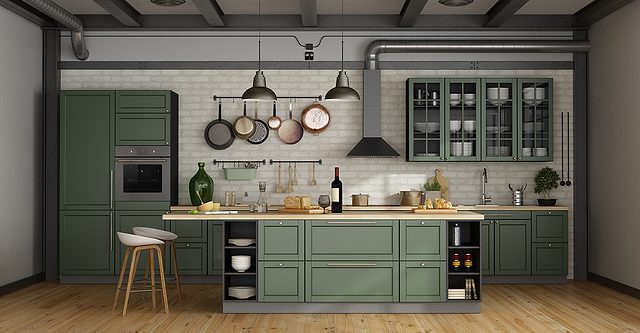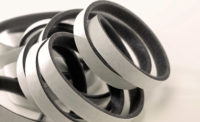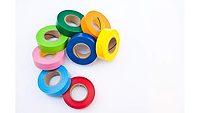Pressure-Sensitive Adhesives Provide Interior Bonding Solutions
April 7, 2023
Pressure-Sensitive Adhesives Provide Interior Bonding Solutions
April 7, 2023The building and construction industry is an ever-evolving industry driven by marketplace pressures and tight margins, supply chain issues, and labor shortages. Manufacturers of residential and commercial interior products are responding with products to make assembly and installation more manageable and less labor-intensive while still delivering the quality, strength, and durability that consumers demand. They’re also looking to provide architects and designers with more easy-to-use DIY solutions to recommend for homeowners’ renovation needs.
Building and Construction Key Issues
Pressure-sensitive adhesives (PSAs) tapes are used widely in residential and commercial construction settings and can be used for several interior applications, including ceilings, functional and wall mounting, backsplashes, tiles, and flooring. These tapes address fundamental challenges faced by manufacturers, architects, designers, suppliers, and DIY consumers of interior products, including ease of use, application flexibility, strength and durability, and consumer safety.
Ease of Use
PSAs adhere quickly with no mess, are conformable and, unlike more permanent solutions, can be repositionable, removable, and permanent. They require minimal training to install — reducing assembly time and addressing ongoing industry labor issues — and are a reliable alternative to mechanical fasteners and wet glue systems.
Application flexibility
PSAs can be engineered to bond to various challenging substrates, including low-surface-energy parts such as plastics and irregular surfaces like textured or uneven surfaces. They can also be used for mounting, ensuring uniform thickness, gap filling, and gasketing applications.
Looking for a reprint of this article?
From high-res PDFs to custom plaques, order your copy today!
Strength and durability
Although thinner and lighter than mechanical systems, PSA tapes provide exceptional dead-load shear performance with long-term holding power. In other words, they can support a lot of weight on the joint where the tape is bonding between surfaces. The durability of tapes allows them to work with plasticizers and other chemicals and perform well under UV light, humid environments, and extreme temperatures.
Consumer safety
PSAs can be formulated to meet consumers’ comfort and safety needs, including low VOC levels, fire retardancy, and more.
Applications
As the frequency of renovations and spending by the DIY market on home upgrades continues, more efficient, quality products will be needed to meet demand. Adhesives are well-suited to address the need to adhere products to interior surfaces in residential and commercial settings. There are many applications for PSA tapes for interior bonding in building and construction, including kitchens, bathrooms, and living areas such as bedrooms, living rooms, finished basements, and garages.

PSA tapes are used in residential and commercial construction interior applications including ceilings, functional and wall mounting, backsplashes, tiles, and flooring.
Bathroom
Remodeling of bathrooms is high on the list of many homeowners, who rely on contractors to install towel bars, tile walls and heated floors, mirrors, and toothpaste and hand-soap dispensers.
Bathroom applications require bonding that can withstand changes in temperature and humidity levels as well as constant use. The surfaces also vary depending on a consumer’s design choices and needs. For example, foam-supported tape is required when combining two different surfaces, such as a hand-soap dispenser. This will require joining the two with a foam bonding to fill the gap between the plastic or metal dispenser and the tile or other wall surface.

Bathroom applications require bonding that can withstand changes in temperature and humidity levels as well as constant use.
Living room
The room where many families spend much of their time creating memories is the living room. This space also receives periodic updates with decorative stone/wood accent walls, ceiling tiles, crown molding, blinds, and ceiling fan medallions. Bonding these items to different surfaces can be accomplished by contractors using PSAs without the tools required by mechanical systems or the mess of wet glue systems.

Contractors can use PSAs that do not use the tools required by mechanical systems.
Kitchen
According to a 2023 Houzz survey, kitchen renovations are the most frequent makeover homeowners embark on and the room in which they invest the most of their renovation dollars. It makes sense, since the survey stated that most homeowners use the kitchen for not only cooking, but for eating, entertaining and socializing. Nearly a quarter of home dwellers also work in their kitchen, and that number has remained relatively unchanged since 2019.
The overwhelming majority of homeowners still work with a professional for their kitchen projects. Areas that PSAs can be most effective for contractors in bonding applications include:
- Vinyl planking (flooring)
- Under-cabinet-mounted lighting
- Wall-mounted utensil holder
- Paper towel holder
- Backsplash
- Blinds
- Edge band and cabinets

Using a suitable PSA in a kitchen can save time, cutting down on labor costs.
Tapes used on mesh backs on backsplashes and similar items can be timesavers. Using a suitable PSA that is tacky and easily applicable to different surfaces and sets up immediately saves time compared to mortar or other wet glue applications that require time to dry.
Selecting the Right PSA Tape
As manufacturers consider the correct tape for their products, they must consider the surface their product will be bonding to, environmental requirements, and needs of the end user. Interior surfaces vary from smooth veneers to uneven substrates to textures, with a variety of other challenges. Below are four steps that will help streamline your selection process.
1. Identify what type of material you will be laminating. Knowing how well your adhesive laminates to various materials can help you determine the best combination. Common substrates include:
- Foams
- Fibrous nonwovens
- Felts or fabrics
- Films and foils
2. Determine the surface energy of the substrate your laminated part will be bonded to in advance. Surface energy affects an adhesive’s ability to bond to that substrate. Using the wrong adhesive on the wrong surface will not produce an effective bond. There are several types of surface energy options:
- High
- Medium
- Low
- Extra low
3. What are your application requirements? An adhesive may face an assortment of conditions during the product’s lifespan. Typical end-use application requirements that should be considered include:
- Temperature resistance
- Humidity resistance
- Solvent/Chemical resistance
- UV resistance
- Shear
- Tack
- Cost
- OEM certification
4. Choose the construction and liner combination that is best suited for your application. When in doubt, consult your PSA tape manufacturer.
Conclusion
Many products and techniques are used to bond interior surfaces within the building and construction market. Assembling dissimilar substrates, whether functional or non-functional, can be difficult with wet glue or mechanical systems. PSA tape offers designers and architects an economical, strong, and clean solution to meet and exceed end-customer needs.
Learn more at tapes.averydennison.com/buildingandconstruction and www.averydennison.com.
Images within the article courtesy of Avery Dennison.



.jpg?height=300&t=1676382930&width=300)

.jpg?height=300&t=1709670950&width=300)

